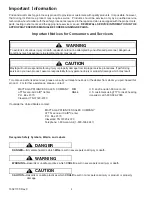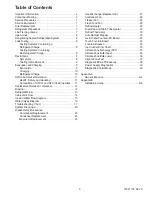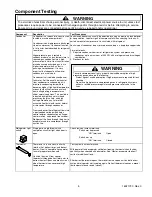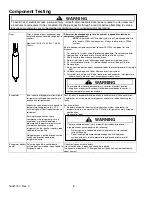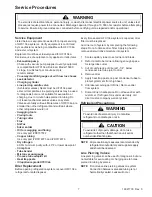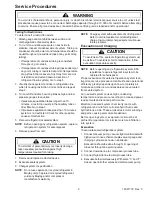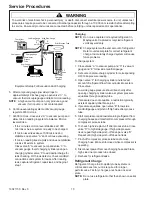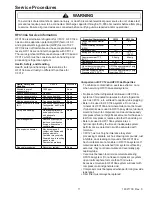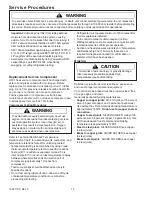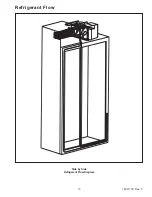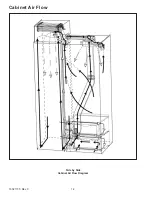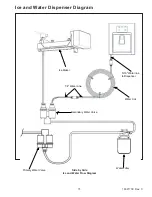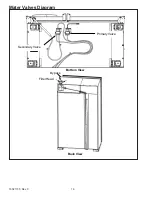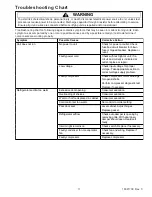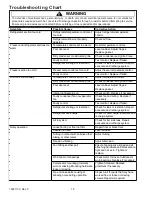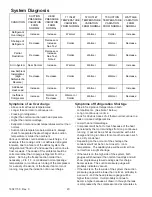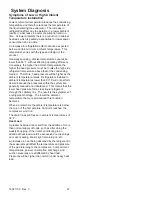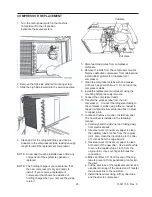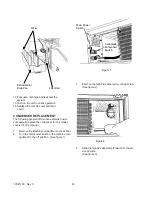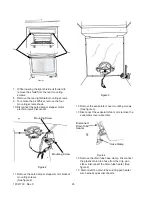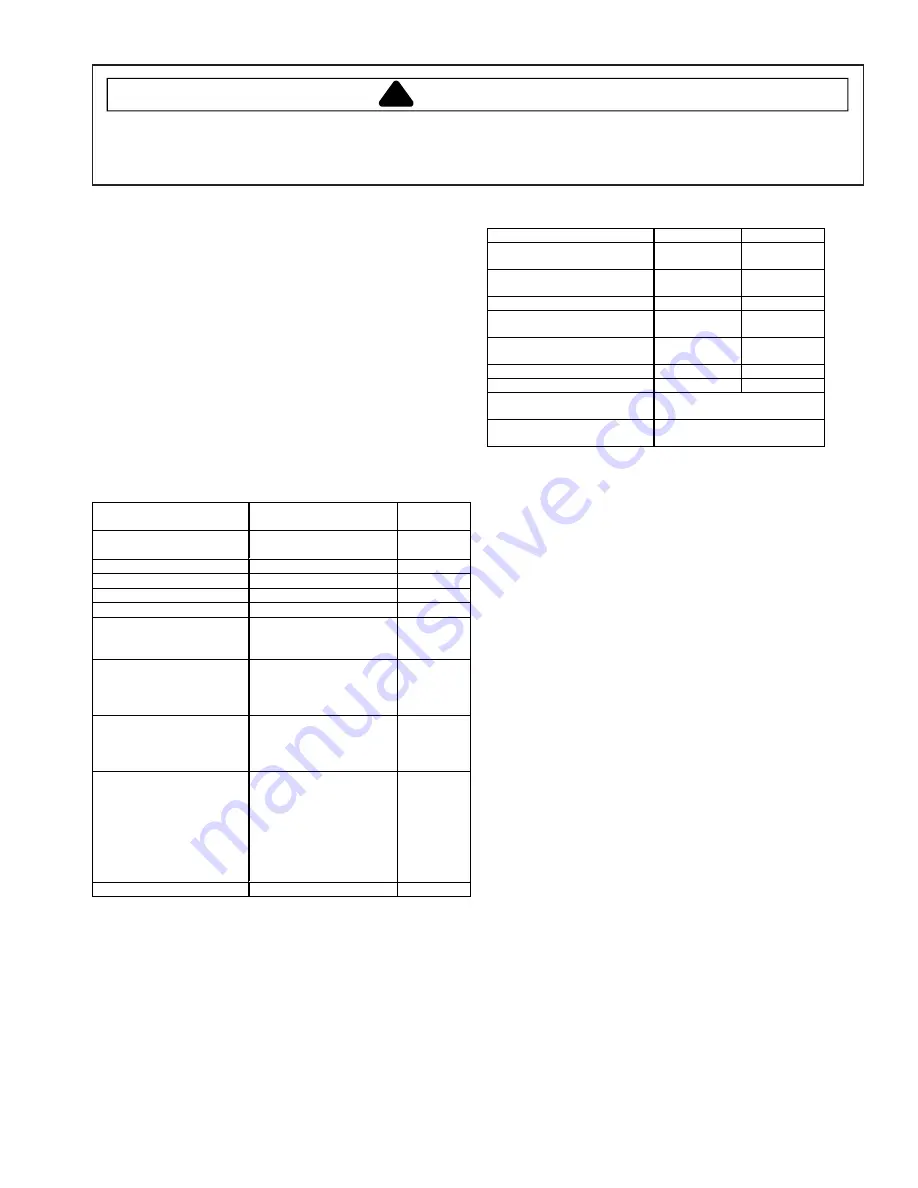
11
16021730 Rev. 0
Service Procedures
!
WARNING
To avoid risk of electrical shock, personal injury, or death, disconnect electrical power source to unit, unless test
procedures require power to be connected. Discharge capacitor through a 10,000 ohm resistor before attempting
to service. Ensure all ground wires are connected before certifying unit as repaired and/or operational.
HFC134a Service Information
HFC134a is alternative refrigerant for CFC12. HFC134a
has an ozone depletion potential (ODP) factor of 0.0
and a global warming potential (GWP) factor of 0.27.
HFC134a is not flammable and has acceptable toxicity
levels. HFC134a is not interchangeable with CFC12.
There are significant differences between HFC134a and
CFC12 which must be considered when handling and
processing refrigeration system.
Health, Safety, and Handling
Health, safety and handling considerations for
HFC134A are virtually no different than those for
CFC12.
Health, Safety, and
Handling
CFC12
HFC134a
Allowable overall
exposure limit
1,000 ppm
Same
Vapor exposure to skin
No effect
Same
Liquid exposure to skin
Can cause frostbite
Same
Vapor exposure to eye
Very slight eye irritant
Same
Liquid exposure to eye
Can cause frostbite
Same
Above minimum exposure
limit
Can cause Asphyxiation,
Tachycardia, and Cardia
Arrhythmias
Same
Safety and handling
Wear appropriate skin
and eye protection. Use
with adequate
ventilation.
Same
Spill management
Remove or extinguish
ignition or combustion
sources. Evacuate or
ventilate area.
Same
Fire explosion hazards
May decompose if
contact with flames and
heating elements.
Container may explode
if heated due to resulting
pressure rise.
Combustion products
are toxic.
Same
Disposal procedures
Recycle or reclaim.
Same
Properties/Characteristics
CFC12
HFC134a
Ozone Depletion Potential
(ODP)
1.0*
0.0*
Global Warming Potential
(GPW)
3.2*
0.27*
Molecular weight
121
102
Boiling point at 1 atmosphere
-22°F (-30°C)
-15°F (-
126°C)
Vapor pressure at 77°F
(25°C)
80 psig
82 psig
Liquid density at 77°F (25°C)
82 lb/ft
3
75 lb/ft
3
Flammability
No
No
High-side system operating
Pressure at 65°F (18°C)
HFC134a approximately 3 psig
higher than CFC12
Low-side system operating
Pressure at 65°F (18°C)
HFC134a approximately 2 psig
lower than CFC12
Comparison of CFC12 and HFC134a Properties
To minimize contamination, exercise extreme care
when servicing HFC134A sealed systems.
No trace of other refrigerants is allowed in HFC134a
systems. Chlorinated molecules in other refrigerants
such as CFC12, etc. will lead to capillary tube plugging.
Ester oil is used in HFC134a systems. Do not use
mineral oil. HFC134a and mineral oils cannot be mixed.
If mineral oils were used in HFC134a systems, lubricant
would not return to compressor and would cause early
compressor failure. If significant amount of oil has been
lost from compressor, replace oil rather than adding oil.
Ester oils used in HFC134a systems are so
hydroscopic that by the time an inadequate system
performance is detected, oil will be saturated with
moisture.
CFC12 has much higher tolerance to system
processing materials, such as drawing compounds, rust
inhibitors, and cleaning compounds, than HFC134a.
Such materials are not soluble in HFC134a systems. If
materials were to be washed from system surfaces by
ester oils, they could accumulate and eventually plug
capillary tube.
Care must be taken to minimize moisture entering
HFC134a system. Do not leave compressor or system
open to atmosphere for more than 10 minutes.
Excessive moisture in HFC134a system will react with
compressor oil and generate acid.
Compressor must be replaced when performing low side
leak repair.
Drier filter must always be replaced.


